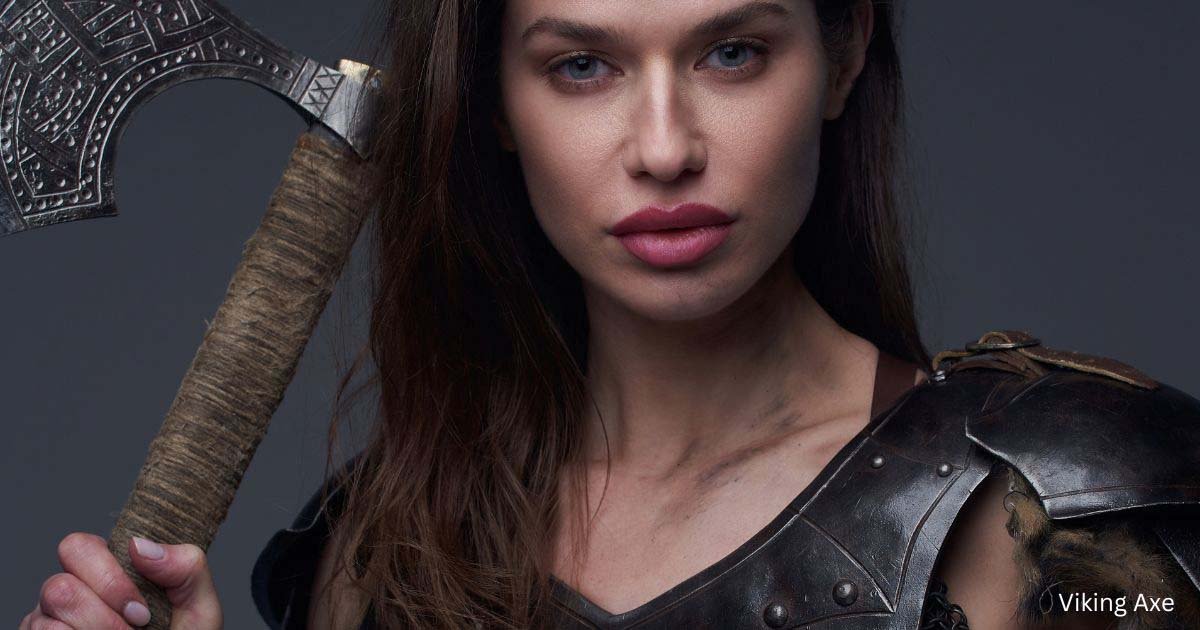Viking axe | Choose the Right One for You

Table of Contents
ToggleHow to Properly Maintain Your Viking Axe
Introduction
The Viking axe is one of the most renowned symbols of Norse society, reflecting both the functional resourcefulness and the intense warrior spirit of the Vikings. In medieval Scandinavian societies, axes were essential for a wide range of tasks, from creating durable ships to taking part in tough fights. The twin nature of Viking axe as both tools and weapons highlights their importance in day-to-day life and their function in the Viking heritage.
History of the Viking Axe
The Viking Age, spanning roughly from the late 8th to early 11th century, saw the surge of Norse seafarers known for their expedition, profession, and warfare. Central to their success were their devices and weapons, with the axe being a vital component. At first, axes were mostly practical and utilized for woodworking and building. However, as Viking society evolved, so did the style and function of their axes, resulting in the production of customized fight axes.
Sorts Of Viking Axes
Battle axes and farm axes were both key tools utilized by the Vikings, each designed for a specific function.
1. Battle Axes: These were lightweight, quick, and commonly made for tossing. The eager edge and wind-resistant design made them dangerous in a fight, allowing for fast, effective strikes. The smaller dimension and balanced weight circulation made it possible for Viking warriors to wield them with terrific speed and accuracy, making them powerful opponents in the fight.
2. Ranch Axes: On the other hand, farm axes were bigger and heavier, built for durability and power. These axes were vital for daily duties such as slicing wood, constructing frameworks, and crafting tools. Their durable style allowed them to handle the roughness of hard labor, reflecting the practical demands of Viking life.

Workmanship and Layout
The workmanship of Viking axes testified to the skill and resourcefulness of Norse blacksmiths. Using locally sourced materials, they forged blades that were not just useful but also artistic. The heads were commonly made from iron, typically with a solidified steel edge for enhanced intensity and sturdiness. Deals were crafted from resilient timbers like ash or oak, chosen for their stamina and flexibility.
Viking axes frequently featured detailed layouts and carvings. These designs might symbolize the owner’s status, portray mythological scenes, or include runes believed to provide defense and strength in battle. The attention to information in both type and function made these axes extremely valued possessions.
Axes in the Viking War
The Viking axe was a functional weapon in the fight, suitable for both melee battling and throwing. Warriors would certainly lug a number of axes right into the fight, using them to damage adversary guards, supply fatal impacts, or develop openings for their comrades. The mental impact of a well-aimed axe, whistling through the air before embedding in a target, can not be overemphasized.
Battle strategies typically involved collaborative axe throws to disrupt the firing line, followed by close-quarters fights utilizing swords or spears. The axe’s design, with a broad reducing edge and aimed beard, enabled it to hook and draw guards or limbs, creating possibilities for the attack. This versatility made the Viking axe a cornerstone of Norse martial technique.
Axes in Viking Culture
In past wars, axes played an important role in Viking society. They were used to build the legendary longships that facilitated Viking raids and expeditions. These ships, with their shallow drafts and strong building, enabled Vikings to browse both open seas and inland rivers, getting to North America and the Mediterranean.
Axes were likewise important in residential life, used to build homes, craft furnishings, and maintain ranches. The capability to efficiently refine wood was important in the cold, forested regions of Scandinavia, where lumber was a primary structure material. This usefulness guaranteed that even non-combat axes were extremely valued.
Modern Passion in Viking Axes
Today, Viking axes mesmerize historians, enthusiasts, and lovers. Their historical relevance and distinct design make them preferred subjects for study and leisure. Reenactment groups and living background museums often feature Viking axes, supplying an understanding of their usage and value.
For enthusiasts, owning a Viking axe is a link to the past, a substantial web link to the famous Norse warriors. Modern blacksmiths and artisans continue to produce reproductions and influence styles, mixing conventional methods with modern products. These axes, while frequently attractive, remain fully useful and efficient in woodworking or as part of historic screens.
Custom-made Viking Axes at Valhalla World
At Valhalla World, we provide a range of Viking axes that commemorate this abundant heritage. Our collection includes both fight axes and farm axes, each crafted with the same interest in detail that differentiated the originals. For those looking for a personal touch, our custom-made axes can be etched with names, initials, or symbols, developing a unique item that shows your connection to Viking society.

Gift Viking Axes
Our present Viking axes are best for fanatics and enthusiasts. Whether you want to begin a collection or include a standout item, these axes supply both aesthetic charm and historical precision. Each axe in our collection is fully useful, made to be utilized as a device, or presented as a testament to Viking craftsmanship.
Beyond Axes: Shields, Swords, and Precious Jewelry
Our shop features a wide selection of Viking-inspired products, including axes. Our guards and swords are crafted with the same commitment to credibility and top quality, making them perfect for reenactors or as special-style items. Our Viking precious jewelry collection consists of items motivated by Norse folklore and artifacts, enabling you to use a piece of background.
Why Select Valhalla World?
At Valhalla World, we are passionate about protecting and celebrating Viking heritage. Our items are crafted with care, ensuring that each satisfies high criteria of quality and authenticity. Everything we sell is not simply an item but a tale, a web link to an interesting and influential time in history.
Conclusion
The Viking axe remains a powerful symbol of Norse society, reflecting the flexibility and strength of the Viking people. Whether used in fights or everyday life, these axes exhibited the workmanship and ingenuity of their makers. Today, possessing a Viking axe links us to this rich heritage, allowing us to value and celebrate a pivotal era in the background. At Valhalla World, we are proud to offer top-notch Viking axes, guards, swords, and jewelry, making certain that the legacy of the Vikings remains to motivate and astound.
FAQs
1. What materials are used in making Viking axes?
Our Viking axes are crafted using premium iron and steel for the heads and handles made from durable timbers such as ash and oak.
2. Can the Viking axes be used for real woodworking?
Yes, all our Viking axes are totally functional and can be utilized for woodworking, along with their worth as collectible products.
3. Do you use personalized engraving on Viking axes?
Absolutely! We offer custom-made engraving options, enabling you to add names, initials, or icons to the handles or heads of our axes.
4. What is the difference between a fight axe and a ranch axe?
Battle axes are lighter and developed for rate and throwing, while ranch axes are heavier and constructed for tasks like slicing wood and building and construction.
5. Are your Viking shields and swords likewise functional?
Yes, our shields and swords are made to be both ornamental and practical, ideal for reenactments and screens.
6. Do you deliver worldwide?
Yes, we offer global delivery, bringing the legacy of the Vikings to fanatics around the world.
Recent Posts
Categories
Related Articles
Montana Mega Millions Numbers | Winning Potential in 2025
Montana Mega Millions Numbers – Winning Numbers, Analysis, History & Lottery Systems...
ByadminMarch 21, 2025Electrical Cable Manufacturer | Applications and Benefits
KMCABLE: The Leading Electrical Cable Manufacturer Providing Reliable Cable Solutions Introduction When...
ByadminFebruary 9, 2025Scannable ID | Smart Way to Verify Your Identity
The Ultimate Guide to Scannable ID for Students Introduction In the vibrant...
ByadminJanuary 20, 2025Best Scannable ID | Vital for Travel and Security
What Makes Scannable IDs More Secure Than Paper IDs In the world...
ByadminJanuary 19, 2025
















Leave a comment